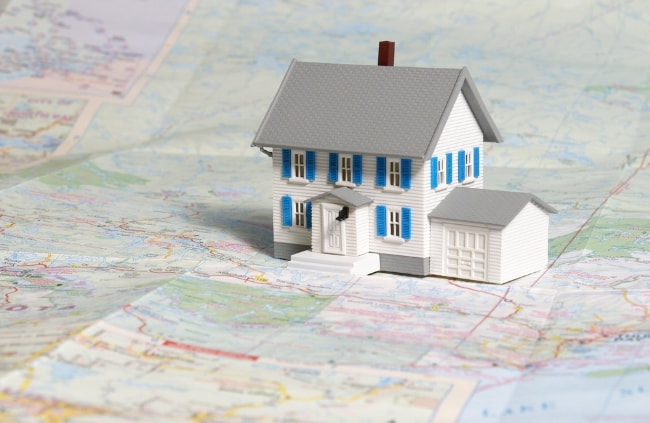|
In a hot market, you pick up the properties that become available, even if they're not perfect, because you know they will sell later. But when the market cools off, it's not just possible but necessary to pay attention to details, especially location. For commercial real estate in the current residential climate, location is not just a consideration but a critical component of your purchasing decision, and just the right property is a real investment opportunity.
Look at the current cycle. Gas prices are high and rising so people don't want to drive. Real estate values no longer allow people to use homes as their personal piggy banks. Foreclosures and upside-down mortgages are causing outright panic in some areas, and property values are tanking in these places because they should - they've been sucked dry of equity. So the smart real estate investor starts looking very carefully at location before purchasing commercial real estate. It should be cheap. It should be close to homes, so the option of walking is available to potential customers. It should provide potential for growth, perhaps space for businesses failing in their current far-off locations to move in and take advantage of the rich pool of customers in the area. But how do you spot these superior areas before everyone else does? Look for these key markers while scouting commercial locations: * Transportation: places that provide dense consumers with expendable income, or places that are served efficiently by public transit, will be growing. Look also at commercial places midway between heavily trafficked work locations and neighborhood centers - a shopping mall that is convenient to stop at on the way home from work is going to draw consumers looking to cut back on gas consumption by eliminating unnecessary trips. * Excellent schools: If you see the performance of a school in one of your targeted areas improving, sit up and pay close attention. School excellence can add as much as 11% to area home values, creating a positive residential market that will spill over to commercial locations. * Watch what's going on in your local government. Do you see certain locations being revitalized? Is a street being transformed into a pedestrian draw, or is a new park being built? These hot spots always stimulate higher property values, which stimulates the nearby economy, and is great for commercial business. * Look through building permits for renovation signs - housing add-ons, conversions of homes to apartments and vice versa. Drive through areas that seem to have a lot of this going on. If you see lot of renovation in an area, that's a sign that housing values are improving and the area may be ripe for some new commercial development as well. * Look in areas where the complaint is that housing prices are too high. When you find areas with people getting priced out of the market, it is sometimes a sign that the location is becoming too desirable, and new hot spots are going to crop up on the fringes of it. Treat a commercial property here with caution; it may also be a localized real estate bubble. Look for other signs that the location is going up before you target your hot new property. What Should You Pay? In an ordinary market, price points for commercial properties are a critical part of your purchasing decision. In a slow market, prices aren't nearly as important as location. That's because location has permanent value, whether the market is hot or cold. In a slow market, great locations often retain more value than marginal locations; the marginal locations are still not necessarily good deals. Think about it this way: when prices for an item are up and there's a limited supply of that item - say, lobsters - then the overall price for all lobsters rises and stays high. When the supply is higher and the demand lower, the overall price drops - just as it has with houses. Except - the royal blue lobster of the Audresselles is still just as expensive, even in a slow market. Why? Because it is unique, especially tasty, and rare even when similar items are plentiful. The best commercial locations will always remain more expensive because they are worth it. The customer base is there, the transportation is there, and the stores will migrate there because it is a recession-proof location. When identifying these locations, focus especially on areas with attractions for young, well-employed people who are ready to settle down with families: good schools, attractive neighborhoods, parks, easy access to work centers, and a growing job base. Urban universities with a high proportion of nontraditional students often attract these conditions, as do well-done urban renewal areas. Learn to scout out signs of new areas that are rising in the market: the new construction, rising housing prices, young professionals jogging through the renovated park, well-dressed children playing in parks as well. Pay less attention to buildings and specific location and more attention to people and how they're starting to use spaces. Listen to the buzz about what new areas are hot, and which old areas, once hot, are just too expensive now (new hot spots will start on the fringes of these). Most of all, keep an open mind. The next hot commercial market may come as a complete surprise. Property News, Bisnis Properti, Properti, Joker123, Slot Game, Game Slot, Sbobet88, Agen Sbobet, Slot Online.
0 Comments
Leave a Reply. |
